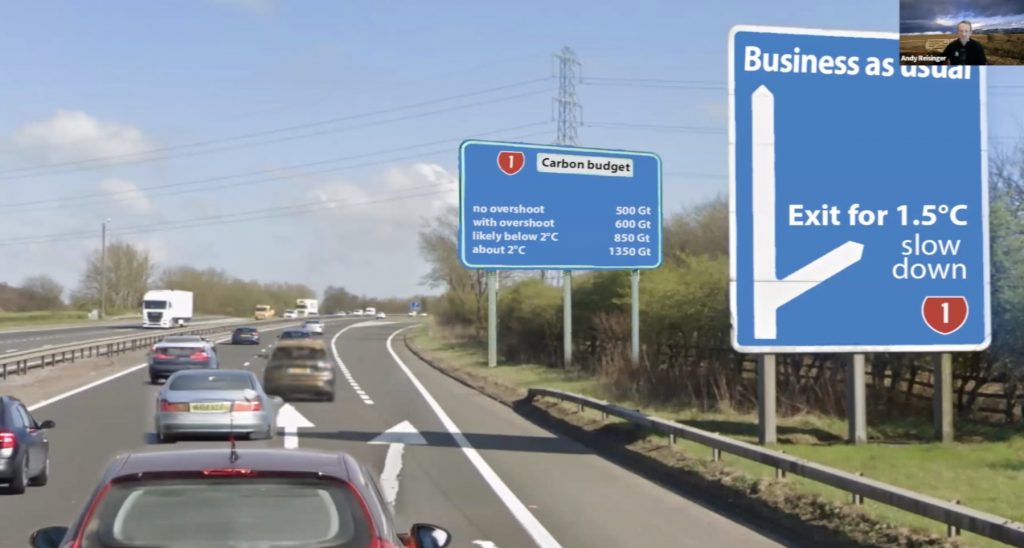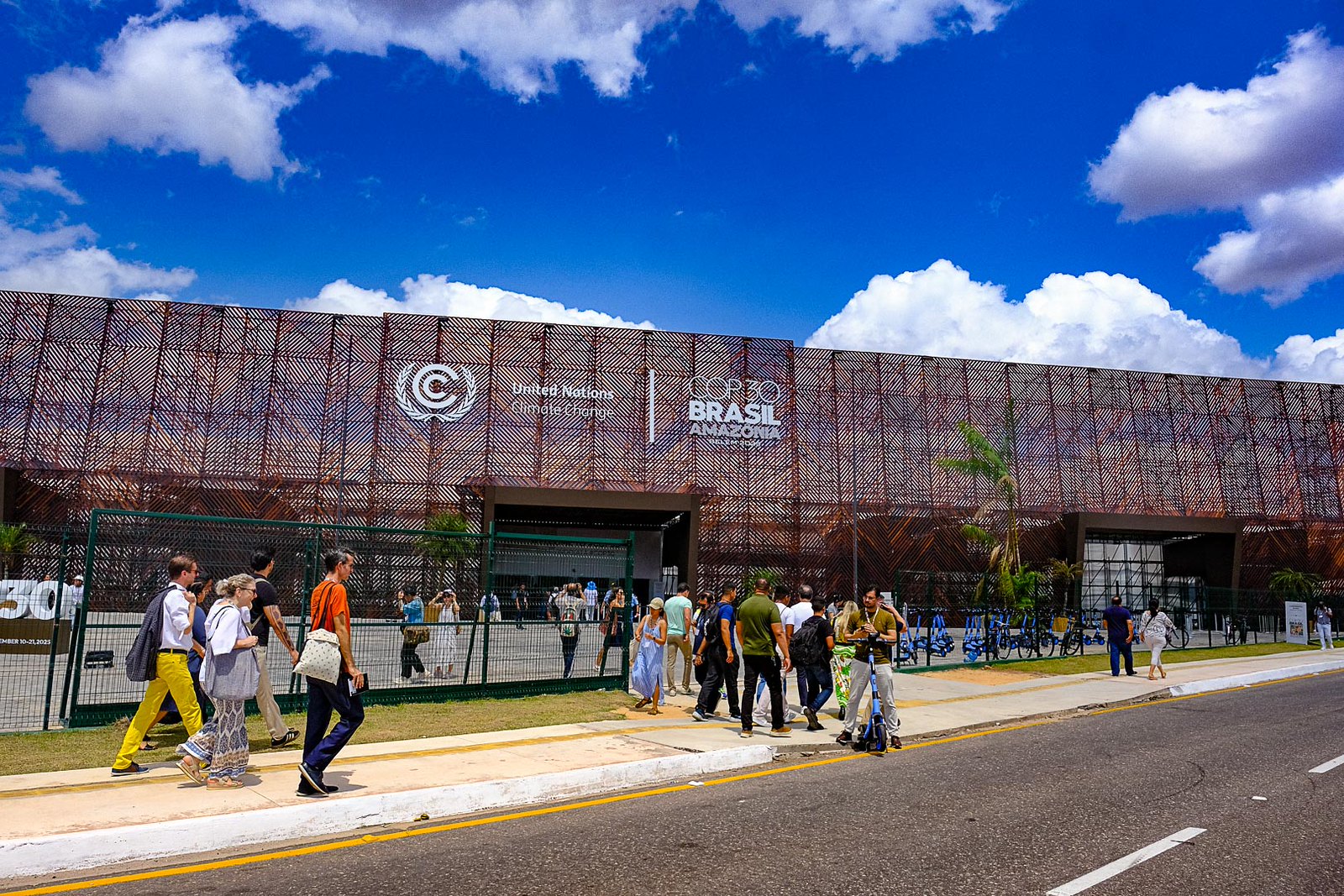Despite decades of warnings and international commitments, most signs indicate that the critical 1.5°C threshold set out in the Paris Agreement has already been exceeded, adding more urgency to a cohesive and coordinated approach to climate action and paving the way for overshoot scenarios.
Andy Reisinger, former vice-chair of the IPCC’s Working Group III on Mitigation and current commissioner on New Zealand’s Climate Change Commission, takes the reins to talk about how we can confront this difficult truth in the latest CMCC lecture on Climate Overshoot. Rather than abandoning the 1.5°C goal, Reisinger walks us through the meaning of “overshoot” – a pathway where global warming exceeds the threshold but is then brought back down through global action – and in the process outlining why it is essential to keep the 1.5°C goal alive, even if we exceed it temporarily.
The road past 1.5°C
Current carbon budgets reveal a bleak picture: according to the latest assessment by the IPCC, global greenhouse gas emissions must peak immediately, reach net-zero CO2 emissions by mid-century, and decline by approximately 43% by 2030 compared to 2019 levels. However, current emission rates suggest the 1.5°C carbon budget could be exhausted in just a few years – less than some of the most pessimistic scenarios previously assessed by the IPCC.
This is the consequence of empty pledges and delayed action across the board. As Reisinger explains, reaching global net zero requires “about 30 years of transformational global action to reduce greenhouse gas emissions,” and “every 5-year delay before we start coordinated action adds about 0.1°C to global warming”. The result is that limiting warming to 1.7°C now requires the same transformational change that 1.5°C would have required in 2018.

There are two key characteristics that define overshoot scenarios: magnitude – by how much temperatures exceed 1.5°C – and duration – how long they remain elevated. Both depend critically on the trajectory of global CO2 emissions, since global warming will peak roughly when we reach net zero CO2 emissions and will decline if we achieve globally net negative CO2 emissions.
This creates two essential conditions for returning to 1.5°C: limiting peak warming by reaching net zero as quickly as possible, and reducing warming after the peak through sustained net-negative CO2 emissions combined with deep cuts to other greenhouse gases, particularly methane.
Achieving a temperature decline requires deploying three complementary strategies, each targeting different aspects of the global carbon cycle. Massive carbon dioxide removal and therefore scaling up technologies that actively extract CO2 from the atmosphere faster than we emit it; stringent reduction of residual emissions, including challenging assumptions about what constitutes “hard to abate” emissions, as well as driving down remaining fossil fuel use through innovation and demand-side changes; and significant reductions in methane emissions.
A more vulnerable world
Perhaps the most sobering aspect of overshoot scenarios lies in their irreversible consequences and the struggle to predict what these will be. Even if temperatures return to 1.5°C, the world will be fundamentally different – and more damaged – than if that threshold had never been crossed, but exactly what these changes will be and how to prepare for them remains an open question.
“A return of global temperature does not equate to a recovery even just of biogeophysical earth systems,” Reisinger explains. While some systems like Arctic sea ice may recover with time, ecosystems could face permanent disruption. “Once you’ve lost keystone species, once food webs are disrupted in a significant way, dialing back temperature will not bring those ecosystems back. Extinct species don’t come back because temperatures decline.”
The social dimensions also offer a clear challenge. Climate risks stem from hazards, exposure, vulnerability, and poorly designed response measures. During overshoot, all these factors intensify. Even after temperatures return, “vulnerability would remain likely much higher” due to “erosion of institutions to actually deal with pressures” and systemic impacts like poverty and malnutrition that compound across generations.
Consider drought-driven malnutrition: elevated temperatures increase hazard frequency and intensity while expanding affected areas. Malnutrition itself erodes institutional capacity and creates multigenerational impacts. When temperatures eventually decline, hazards may decrease but exposure remains elevated due to land degradation, while vulnerability stays high due to weakened institutions and entrenched poverty.
However, not all impacts follow this pattern. For example, heat-related mortality might benefit from effective adaptation during overshoot due to the development of measures such as improved early warning systems, upgraded buildings, and better cooling access. Such measures could theoretically leave society better protected even after temperature increases are reversed, although these optimistic scenarios require proactive, equitable adaptation.
The policy challenge
Overshoot scenarios carry profound implications for climate governance. Moving beyond net-zero to net-negative emissions would require unprecedented international cooperation. “Will there be a global consensus that we actually want to achieve this?” Reisinger asks.
Current policy frameworks aren’t designed for such scenarios. Emissions trading schemes, carbon pricing mechanisms, and international agreements all assume net-zero as the ultimate goal whereas achieving sustained net-negative emissions “will redefine the role of governments as key actors in delivering emission outcomes rather than just as regulators of markets.”
The technical challenges prove equally daunting. Frontrunner countries and corporations will need to develop net-negative targets with credible delivery pathways. This means going “beyond polluter pays principles to design policies” since traditional market mechanisms can’t effectively operate with net-negative caps.
Despite these sobering realities, overshoot scenarios maintain what Reisinger calls the “enduring relevance” of 1.5°C. The goal retains meaning because the science is clear: every tenth of a degree matters.
“Every tenth of a degree of additional warming increases the risks that the world faces. Every tenth of a degree more leaves us in a more risky and more damaged world,” says Reisinger. This makes limiting overshoot’s magnitude and duration critical for minimizing long-term damages.
The window for preventing 1.5°C overshoot seems to have closed, but the possibility of shaping what comes next remains open. Understanding these pathways becomes essential for policymakers, researchers, and society as we navigate the climate challenges ahead.
Watch the lecture: Overshoot: challenges and choices after we exceed 1.5°C
Explore the research: CMCC Overshoot Platform






